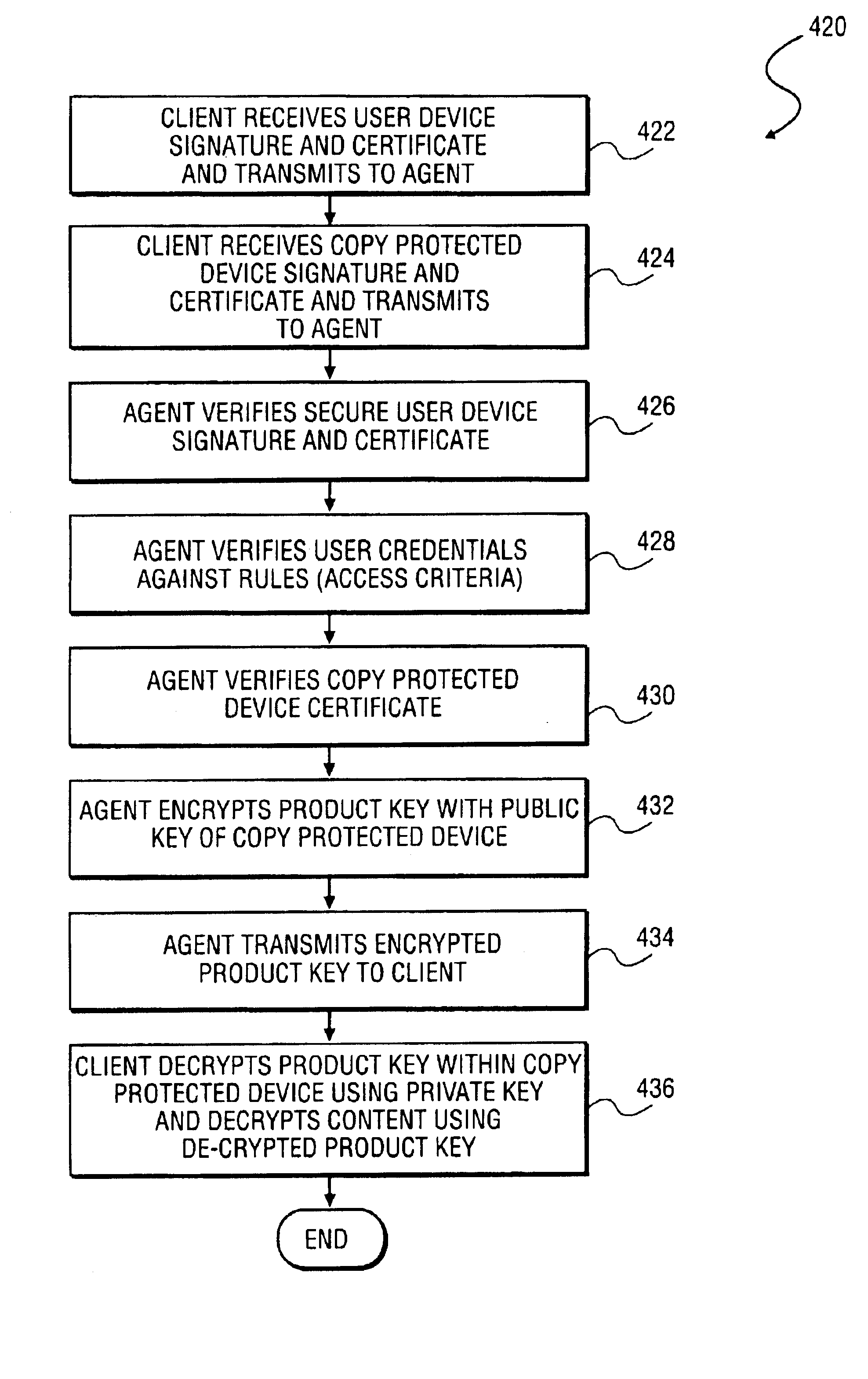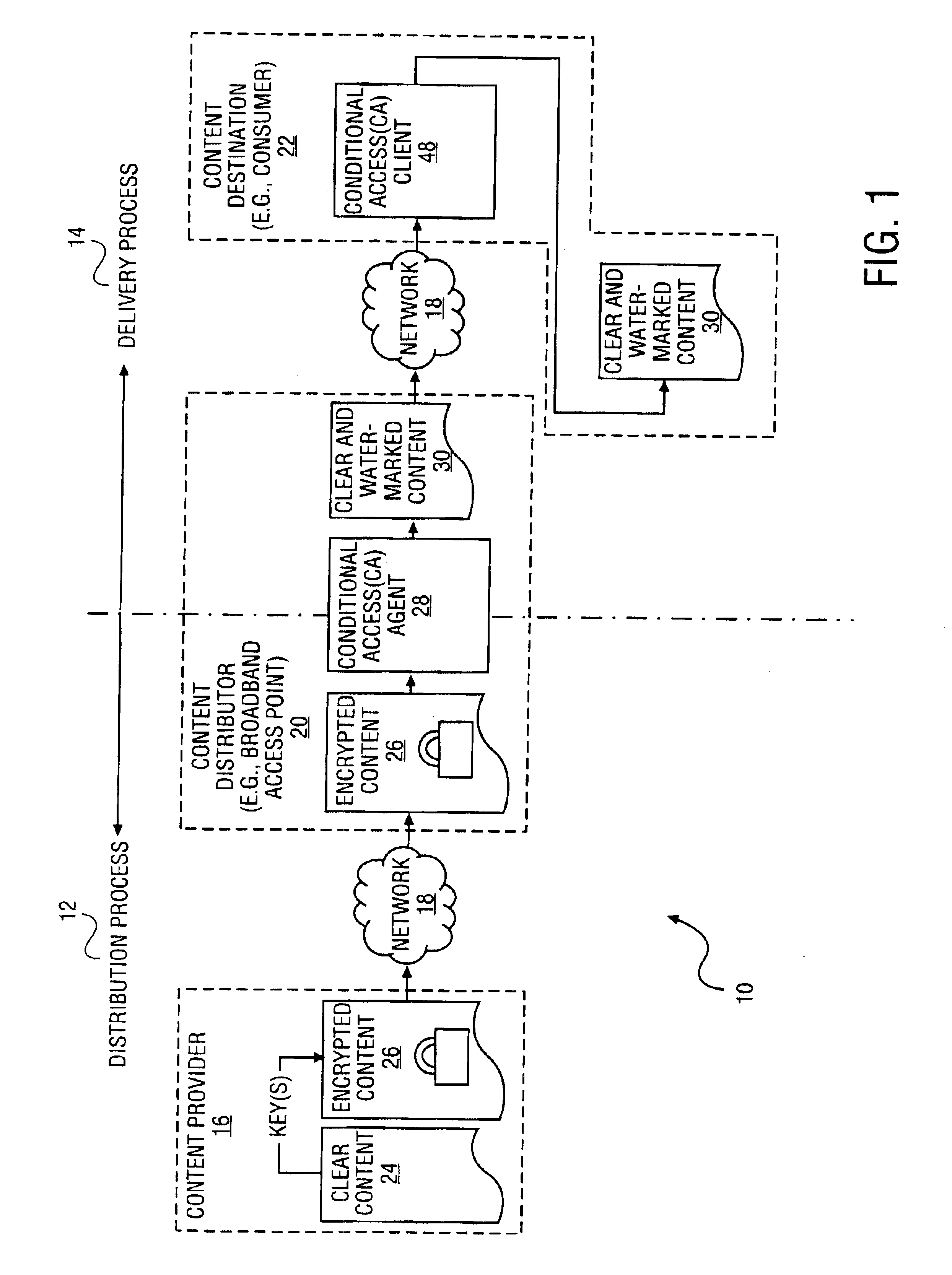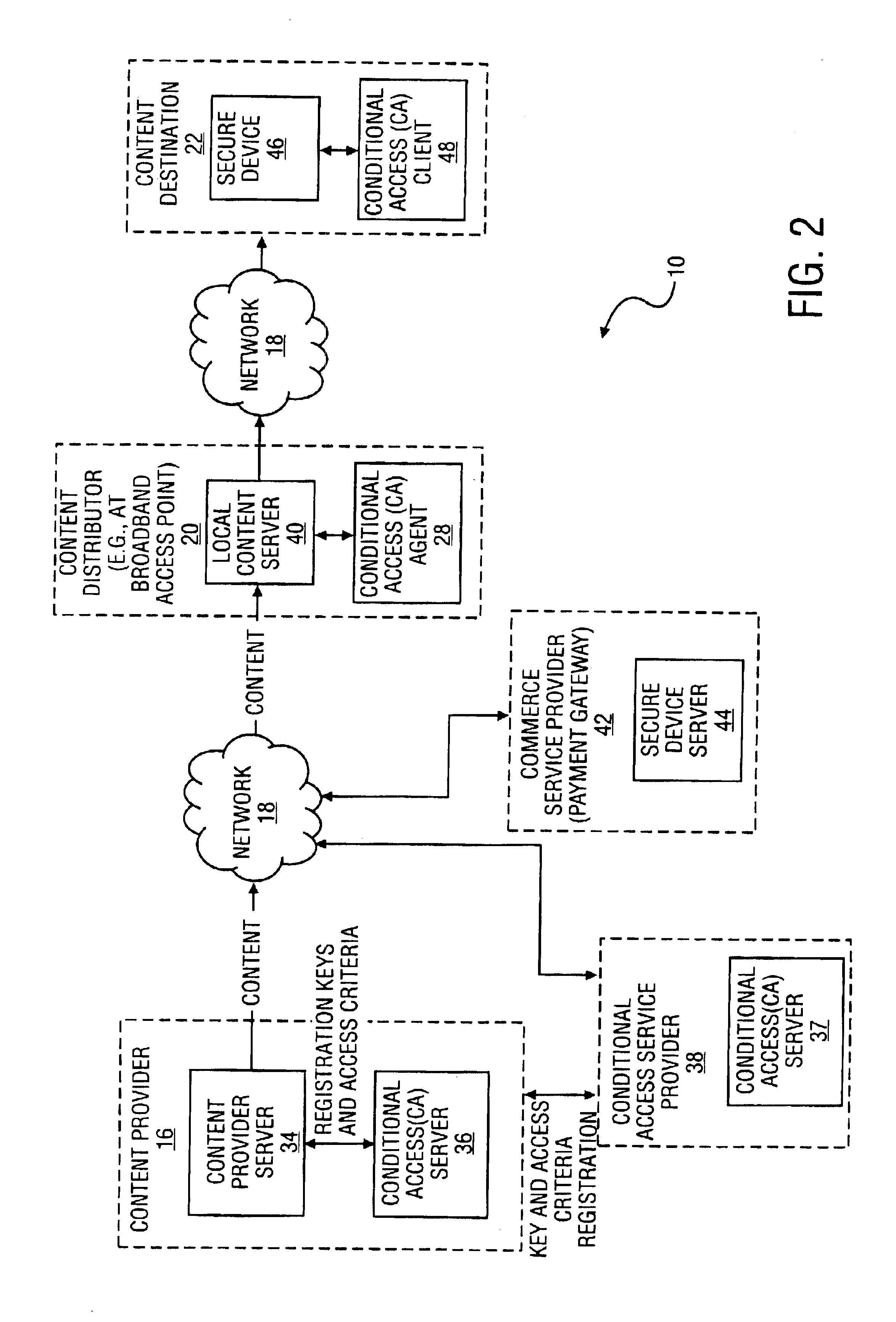Method and system to secure content for distribution via a network
a content and network technology, applied in the field of network communication, can solve problems such as expensive exercise, content piracy and digital rights management, and secure devices in the field need to be replaced,
- Summary
- Abstract
- Description
- Claims
- Application Information
AI Technical Summary
Benefits of technology
Problems solved by technology
Method used
Image
Examples
Embodiment Construction
[0052]A method and system to secure content for distribution via a network are described. In the following description, for purposes of explanation, numerous specific details are set forth in order to provide a thorough understanding of the present invention. It will be evident, however, to one skilled in the art that the present invention may be practiced without these specific details and that these specific details are exemplary.
Overview—Content Distribution System
[0053]FIG. 1 is a diagrammatic representation of a content distribution system 10, according to an exemplary embodiment of the present invention. The system 10 may conceptually be viewed as comprising a distribution process 12 and a delivery process 14. Within the distribution process 12, multiple content providers 16 (e.g., a content producer or owner) distribute content via a network 18 (e.g., the Internet (wireless or wired)) to content distributors (or distribution points) 20. The distribution of content from a cont...
PUM
 Login to View More
Login to View More Abstract
Description
Claims
Application Information
 Login to View More
Login to View More - R&D
- Intellectual Property
- Life Sciences
- Materials
- Tech Scout
- Unparalleled Data Quality
- Higher Quality Content
- 60% Fewer Hallucinations
Browse by: Latest US Patents, China's latest patents, Technical Efficacy Thesaurus, Application Domain, Technology Topic, Popular Technical Reports.
© 2025 PatSnap. All rights reserved.Legal|Privacy policy|Modern Slavery Act Transparency Statement|Sitemap|About US| Contact US: help@patsnap.com



